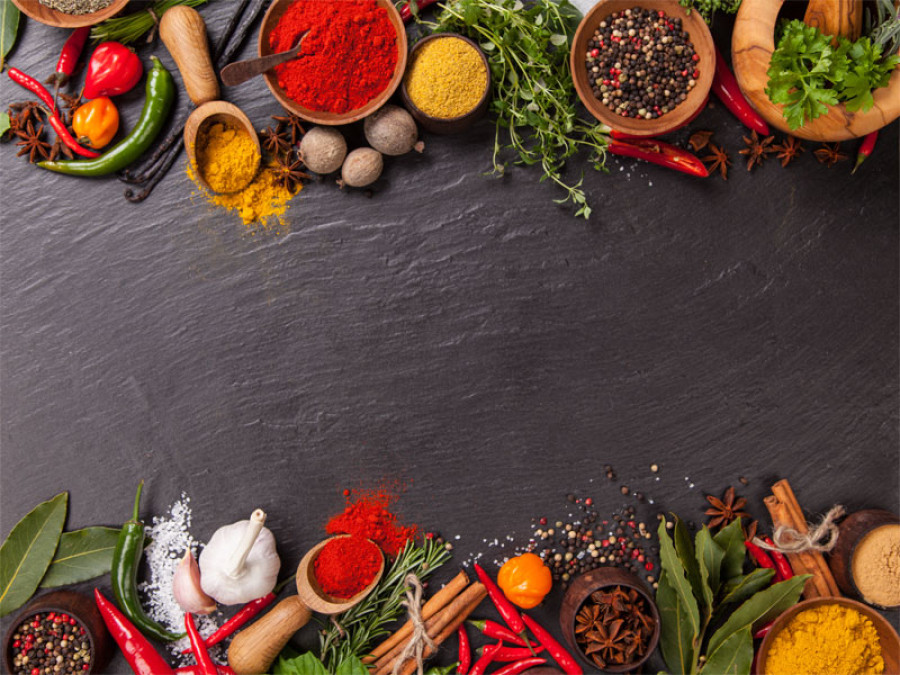Food
Food that divides us
For many, food is something that connects two people. But there are some historical food practices that have been used as tools for social exclusion
Prashanta Khanal
In the book ‘Social History of Nepal’, the authors—Tulasi Ram Vaidya, Tri Ratna Manandhar and Shankar Lal Joshi—account that the people who drink alcohol and eat buffalo meat were looked down upon by supposedly higher castes. Because of this culture, some Newas, who were close to Ranas and employed in high post, gave up drinking alcohol and eating buff publicly even though those customs were followed while worshipping ancestral deities. They considered themselves elevated in social status by abhorring those customs in public.
In a society, already stratified with class, high caste folks have not only dictated the supremacy of their social norms but also food culture. As much as food has connected us, historically, some food practices have also been used as tools for social exclusion. What you eat has historically defined your class and vice versa.
Growing up in two cultures—Newa and Bahun—with contrasting practices and values, I have observed how food has defined the differences and supremacy of one culture to another. In my mother’s Newa culture, people revere buffalo meat and alcohol, and even offer them to deities. Whereas my father’s Bahun community abstains from consuming buff and alcohol, and considers people who practice such a culture of belonging to an inferior class.
Although we have embraced and enjoyed both the cultures at our home, still, till this day, goat and buffalo meat are cooked separately during Dashain and Tihar to avoid contamination and to make the meat acceptable for my father’s kin.
My paternal grandmother abstained from visiting our home for a very long time and never ate the food cooked by my mother. As dictated by society, this culinary casteism—who is allowed in the kitchen and purity of food—still exists.
“Even higher caste Newas refrained from consuming buffalo meat,” recalled historian Tri Ratna Manandhar, one of the authors of the book. “They consumed goat meat, which is associated with the higher castes. In the Kathmandu Valley, only the lower caste consumed pig.”
In 1854, through the first Muluki Ain, Rana Prime Minister Jung Bahadur Rana legalised centuries-old societal hierarchy of caste and class and institutionalised it throughout the country, including among the non-Hindus. The state divided Nepali society into tagadhari (Hindu sacred-thread wearer), matwali (alcohol consumer) and dalit (untouchable) classes. The code also put strict regulations on caste-based food practices, especially on consumption of alcohol and meat.
Brahmin and Chhetri, the tagadharis, were considered socially superior to the matwalis, and they wouldn’t eat the food cooked by people belonging to the lower caste. Dalits, the untouchables, were the lowest class in the hierarchy, and even water touched by them was considered impure. They were even abstained from directly fetching water from the water source and entering the houses of the higher castes.
These rules were designed by the higher caste to fit their necessity. Even though utensils made or grains harvested by supposedly untouchable caste were deemed usable by the upper caste, food cooked by lower caste were deemed impure.
Historically, many ethnic communities, including Dalits, in Nepal had beef-eating practice. But the killing of cows was outlawed nationwide by the Hindu Shah king in 1805. The state sent out public notice all over the country stating that anyone who slaughters a cow will be given a death sentence and their property confiscated. The 1854 Muluki Ain reduced the capital punishment to life imprisonment for intentional killing and fine for negligent killing.
Today, consuming beef is allowed in the country, but slaughtering a cow is still proscribed, earlier as a sacred animal and now as a national animal. But because of centuries of state’s systematic indoctrination, beef-eating is frowned upon, even within the communities that once practised eating beef. Some even exhibit their superiority to those who continued, often secretly, consuming the meat of cows that died naturally or by accident.
Gurungs, who didn’t have the culture of eating pig, claimed to be superior to the pig-consuming ethnicities. Many Thakalis abstain from consuming yak, which was commonly consumed by neighbouring communities. Even though Hindu higher caste folks frown upon consuming pig, they, except Bahuns, consume wild boar as a delicacy. The acceptance was probably because of the influence of the ruling class, royals and Ranas, who commonly consumed wild boar.
I remember, at my mamaghar (maternal uncle home), how maiju would hesitate to serve me millet dhido when I was young. In Bahun and other higher castes, millet was considered as an impure or bad grain (ku-anna) and a poor person’s staple. This reasoning could be partly because of the association of millet with lower caste and alcohol making. Although the higher caste consumed millet, they abstained consuming the grain during religious ceremonies. In most hilly matwali communities, millet is a staple and even offered to their ancestral deities.
"Although Newas in Kathmandu Valley ate millet, its dishes were never included in the bhoye. Only baji (beaten rice) was served," says Manandhar. When asked if it was because millet was perceived as an inferior or lower class grain, he opines that it is possibly not the case. But rice has always symbolised class.
Rice, from the very onset, was considered a superior grain, and only well-offs and the ruling class could afford to consume it on a daily basis. Consuming rice reflected one's higher status in society. For that very reason, many communities shifted their staples from traditional grains such as millet, buckwheat, barley, naked-barley and sorghum to rice.
But for centuries, barley and rice were considered pure and even used in Hindu’s rituals and sacrificial offerings to Agni, the god of fire. The concept of pure (chokho) and impure (bitulo) food is ingrained in Hindu and can be traced back to vedic era, some 3,500 years ago.
Today, things have evolved: even varieties of rice have class. Aromatic rice is the most preferred and consumed by rich royals and elites. Ghaiya, dry-land rice grown in hills and consumed largely by hilly ethnic communities, are considered lower in status.
But with changing society, new generations have challenged the conventional notion of what to eat and what not to eat according to caste. There was once a time when orthodox Bahuns abstained from consuming chicken and mushroom. But today many new generation Bahuns consume pork, buffalo meat, and alcohol, albeit they practice this outside his home.
In recent times, food has slowly become less about the caste but more about economic class—not saying that it wasn’t the case before. But as it is with everything in life, food cultures change over time too. For instance, rice was once one of the most expensive grains, but today it is becoming inexpensive and accessible. Other grains such as buckwheat, millet and barley are becoming pricier. The growing urban middle class are attracted toward these grains primarily for health reasons. .
And acknowledging the history of different food cultures, and understanding and respecting their food practices is the only way we can move forward. Only then can we let food be that which connects us rather than something which divides.




 13.12°C Kathmandu
13.12°C Kathmandu










